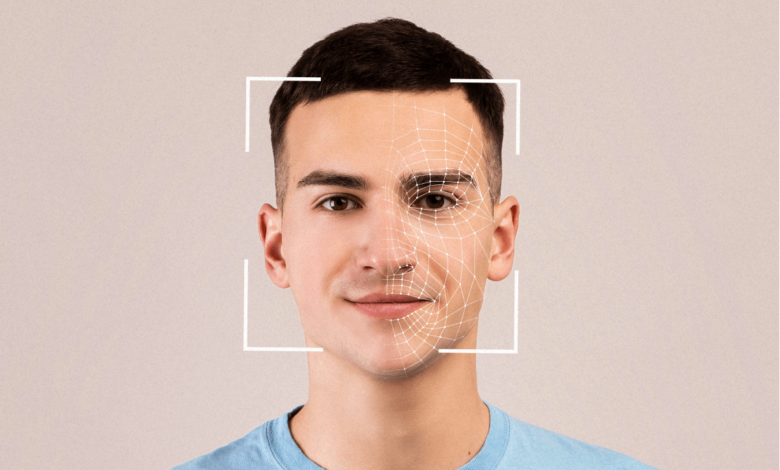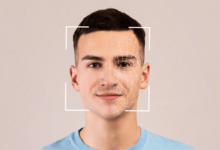Implementing Facial Recognition Check-In: A Step-by-Step Guide

Introduction
Imagine attendees walking straight into your event with no lines and no fumbling for tickets, just a seamless, secure entry. Intrigued? That’s the power of facial recognition check-in. This technology revolutionises event management, but how do you implement it effectively? We’ll discuss the core steps, from understanding the tech to addressing privacy concerns and exploring the tangible benefits of your event. This blog will also cover how integrating facial recognition check-in with existing event management systems enhances efficiency, and we’ll touch on future trends shaping this innovative field.
How Facial Recognition Technology Powers Check-In
Let’s begin by demystifying the technology. How exactly does a face translate into a swift entry? At its core, facial recognition check-in relies on sophisticated algorithms.
- Image Capture and Analysis: High-resolution cameras capture attendees’ facial images. These images are then analyzed to identify key facial features, such as the distance between the eyes, the nose’s shape, and the jawline’s contour.
- Data Matching: The captured facial data is compared against a pre-registered database of attendee images. If a match is found, the system confirms the attendee’s identity.
- Integration with Event Systems: This data is seamlessly integrated with event management systems, allowing real-time attendance tracking and access control.
This intricate process happens in mere seconds, transforming the check-in experience. To streamline your event’s check-in process and enhance attendee satisfaction, explore how fielddrive’s integrated facial recognition check-in systems can be tailored to meet your specific event needs. Their solutions offer a robust and efficient approach to attendee management, minimising wait times and maximising engagement.
Implementing Facial Recognition Check-In: A Step-by-Step Guide
Now, let’s break down the practical steps in implementing facial recognition check-in at your event.
- Planning and Assessment: Begin by defining your event’s specific needs and assessing the feasibility of facial recognition technology. Consider the size of your event, the expected number of attendees, and your security requirements.
- Selecting a Reliable System: Choose a reputable facial recognition software and hardware provider. Ensure the system is accurate, reliable, and compliant with relevant privacy regulations.
- Data Collection and Registration: Implement a secure and user-friendly registration process to collect attendee facial images. Obtain explicit consent from attendees before capturing and storing their biometric data.
- System Integration and Testing: Integrate the facial recognition system with your existing event management software, such as registration and access control systems. Conduct thorough testing to ensure seamless operation.
- On-Site Implementation and Support: Deploy the necessary hardware at your event venue, such as cameras and kiosks. Provide on-site support to assist attendees with check-in and address technical issues.
Transitioning from planning to execution requires careful consideration of privacy and security.
Addressing Privacy Concerns in Facial Recognition Check-In
A critical aspect of implementing facial recognition check-in is addressing privacy concerns. Transparency and consent are paramount.
- Transparency and Consent: Communicate to attendees how their facial data will be collected, stored, and used. Obtain explicit consent before capturing any biometric information.
- Data Security: Implement robust security measures to protect attendee data from unauthorized access, use, or disclosure. Employ encryption, access controls, and regular security audits.
- Compliance and Regulations: Ensure compliance with all applicable privacy laws and regulations, such as GDPR and CCPA. Seek legal counsel to ensure your implementation is compliant.
- Data Retention Policies: Establish clear data retention policies and inform attendees how long their facial data will be stored. Provide options for attendees to delete their data after the event.
Building trust with attendees is crucial for successfully adopting facial recognition check-in.
The Benefits of Facial Recognition Check-In for Events
Beyond speed and security, facial recognition check-in offers numerous benefits.
- Faster Entry and Reduced Queues: Eliminate long lines and waiting times, providing attendees with a seamless and efficient check-in experience.
- Enhanced Security: Improve security by verifying attendee identities and preventing unauthorized access.
- Improved Attendee Experience: Offer a modern, contactless check-in experience that enhances attendee satisfaction.
- Data Collection and Analytics: Gather valuable data on attendee attendance and behaviour, enabling you to optimize future events.
The Future of Facial Recognition Check-In
The field of facial recognition check-in is constantly evolving. This technology, once considered futuristic, is rapidly becoming a mainstream solution, driven by continuous innovation and increasing demand for seamless, secure, and personalized experiences.
- AI and Machine Learning: Advancements in AI and machine learning are improving the accuracy and efficiency of facial recognition systems.
- Integration with Other Technologies: Facial recognition is integrated with other event technologies, such as mobile apps and virtual reality, to create immersive experiences.
- Biometric Authentication Beyond Check-In: Facial recognition is used for other event applications, such as secure access control and personalized content delivery.
Facial recognition is poised to transform the event industry, not just by speeding up entry but by fundamentally changing how attendees interact with events
Conclusion
In summary, implementing facial recognition check-in offers numerous benefits, from enhanced security and faster entry to improved attendee experience and valuable data collection. Following a step-by-step guide and addressing privacy concerns, you can successfully implement this innovative technology at your next event. The future of event management is here, and facial recognition check-in is leading the way.
To truly revolutionise your event check-in, consider the power of integrated solutions. fielddrive’s comprehensive event technology platform and cutting-edge facial recognition technology allow for a seamless, secure, and data-rich attendee experience. With fielddrive, event organisers can get detailed attendee insights, optimise event flow, and create memorable experiences that leave a lasting impression.
Their software is built for scalability, so whether you are hosting a small seminar or a large-scale convention, fielddrive can adapt to your needs. Explore how they can help you elevate your event to the next level.





